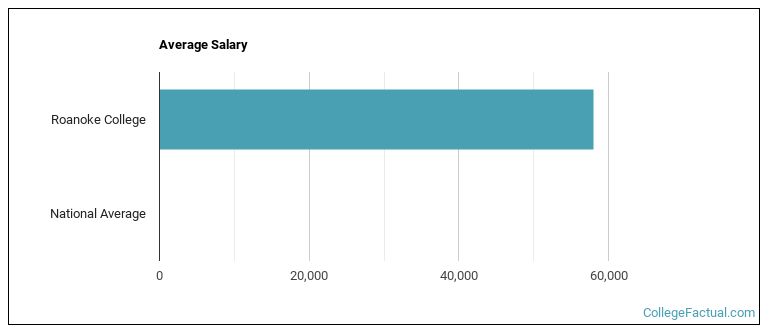 by our College Data Analytics Team
by our College Data Analytics TeamExplore the best ranked schools for the programs you are most interested in.
According to College Factual's 2025 analysis, Roanoke is ranked #1,018 out of 2,152 schools in the nation that were analyzed for overall quality.
Roanoke is also ranked #25 out of 57 schools in Virginia.
The acceptance rate at Roanoke College is 80%. That's higher than the rate at many schools, but still low enough to be considered somewhat selective. If you want to get in, you'll need good grades and to be able to show that Roanoke is a good fit for you.
About 37% of students accepted to Roanoke submitted their SAT scores. When looking at the 25th through the 75th percentile, SAT Evidence-Based Reading and Writing scores ranged between 550 and 650. Math scores were between 520 and 610.
The student to faculty ratio at Roanoke is an impressive 11 to 1. That's quite good when you compare it to the national average of 15 to 1. This is a good sign that students at the school will have more opportunities for one-on-one interactions with their professors.
Another measure that is often used to estimate how much access students will have to their professors is how many faculty members are full-time. The idea here is that part-time faculty tend to spend less time on campus, so they may not be as available to students as full-timers.
The full-time faculty percentage at Roanoke College is 75%. This is higher than the national average of 47%.
The freshmen retention rate of 74% tells us that most first-year, full-time students like Roanoke College enough to come back for another year. This is a fair bit higher than the national average of 68%. That's certainly something to check off in the good column about the school.
Students are considered to have graduated on time if they finish their studies within four years. At Roanoke the on-time graduation rate of first-time, full-time students is 64%. That is great when compared to the national average of 33.3%
Find out more about the retention and graduation rates at Roanoke College.
During the 2017-2018 academic year, there were 1,920 undergraduates at Roanoke with 1,883 being full-time and 37 being part-time.
| $0-30 K | $30K-48K | $48-75 | $75-110K | $110K + |
|---|---|---|---|---|
| $21,184 | $21,167 | $23,890 | $28,913 | $32,622 |
The net price is calculated by adding tuition, room, board and other costs and subtracting financial aid.Note that the net price is typically less than the published for a school. For more information on the sticker price of Roanoke, see our tuition and fees and room and board pages.
It's not uncommon for college students to take out loans to pay for school. In fact, almost 66% of students nationwide depend at least partially on loans. At Roanoke, approximately 71% of students took out student loans averaging $8,696 a year. That adds up to $34,784 over four years for those students.

Get more details about the location of Roanoke College.

Contact details for Roanoke are given below.
| Contact Details | |
|---|---|
| Address: | 221 College Lane, Salem, VA 24153-3794 |
| Phone: | 540-375-2500 |
| Website: | https://www.roanoke.edu/ |
| Most Popular Majors | Bachelor’s Degrees | Average Salary of Graduates |
|---|---|---|
| Business Administration & Management | 75 | $45,557 |
| General Psychology | 49 | $32,550 |
| Health & Physical Education | 46 | $27,304 |
| General Biology | 35 | $37,458 |
| Communication & Media Studies | 33 | $36,220 |
| Teacher Education Grade Specific | 31 | NA |
| Criminal Justice & Corrections | 23 | NA |
| Public Health | 17 | NA |
| Natural Resources Conservation | 16 | $39,588 |
| Political Science & Government | 16 | NA |
If you’re considering Roanoke College, here are some more schools you may be interested in knowing more about.
Curious on how these schools stack up against Roanoke? Pit them head to head with College Combat, our free interactive tool that lets you compare college on the features that matter most to you!
Footnotes
*The racial-ethnic minorities count is calculated by taking the total number of students and subtracting white students, international students, and students whose race/ethnicity was unknown. This number is then divided by the total number of students at the school to obtain the racial-ethnic minorities percentage.
References
More about our data sources and methodologies.